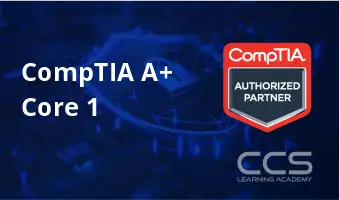Filter by Topic
Filter by Vendor
Python Flask eLearning
Course Description: This online training course is a high level …
What you'll learn
Setting up an environment to build a Flask app
Create a flask app while exploring different simplistic functionality
Using templates with Flask
Working with forms in Flask
Define and perform CRUD operations on DB objects with Flask
User authentication with Flask
Display avatars for users on their profile page
Learn the different functionality offered by Node.js for buffer interaction
Introduction to the “follower” functionality to your blog
Pagination with Flask
Support email transactions in our Flask app
Working with dates and times in your Flask app
Learn the basic usages of the express framework in your Node apps
Add full text search functionality with elasticsearch
Learn how to deploy your Flask app to Heroku
Understand how to build a fully functional RESTful API for our Flask based blog
Python Foundations eLearning
Course Description: This online training course is a high level …
What you'll learn
Setting up a computer to utilize the Python technology
Create programs and learn various syntactical rules
How to assign variable values and about the different types of variables that Python supports
Various string operations
List operations
Tuple operations
Available operations for dealing with numbers in Python
Pythonic operators
How to use if statements to execute code conditionally
Using and controlling standard looping ability in Python
Use of the dictionary data structure
Time manipulation and formatting
Define, use, and return functions
Python modules in your application
Input/Output collection and manipulation
Defining, raising and handling exceptions
Classing and object oriented terminology
Regular expressions matching and searching
Connect your Python app to a database and execute queries
Types of sockets and their respective options
Python threading and how to use it in code
GUI abilities, specifically the provided tkInter
CompTIA A+ Core 1
CompTIA’s A+ certification is the industry standard for validating the …
What you'll learn
Install and configure PC system unit components and peripheral devices.
Install, configure, and troubleshoot display, multimedia devices, storage devices, and internal system components.
Explain network infrastructure concepts.
Configure and troubleshoot network connections.
Implement client virtualization.
Support and troubleshoot laptops, mobile devices and print devices.
CCSP (Certified Cloud Security Professional) Exam Prep | eLearning Bundle
Technology professionals who understand cloud-specific security are in high demand. …
What you'll learn
Understand legal frameworks and guidelines that affect cloud services.
Recognize the fundamentals of data privacy regulatory/legislative mandates
Assess risks, vulnerability, threats, and attacks in the cloud environment.
Evaluate the design and plan for cloud infrastructure security controls.
Evaluate what is necessary to manage security operations.
Understand what operational controls and standards to implement.
Describe the types of cloud deployment models in the types of “as a service” cloud models currently available today.
Identify key terminology, and associated definitions related to cloud technology. Be able to establish a common terminology for use with in your team or workgroup.
Build a business case for cloud adoption and be able to determine with business units the benefits of the cloud and cloud migration strategies.
CISSP (Certified Information Systems Security Professional) Exam Prep
Best CISSP Certification Prep Course Online Overview Passing CISSP requires …
What you'll learn
Understand and apply fundamental concepts and methods related to the fields of information technology and security.
Align overall organizational operational goals with security functions and implementations.
Understand how to protect assets of the organization as they go through their lifecycle.
Understand the concepts, principles, structures, and standards used to design, implement, monitor, and secure operating systems, equipment, networks, applications, and those controls used to enforce various levels of confidentiality, integrity, and availability.
Implement system security through the application of security design principals and the application of appropriate security control mitigations for vulnerabilities present in common information system types and architectures.
Understand the importance of cryptography and the security services it can provide in today’s digital and information age.
Understand the impact of physical security elements on information system security and apply secure design principals to evaluate or recommend appropriate physical security protections.
Understand the elements that comprise communication and network security coupled with a thorough description of how the communication and network systems function.
List the concepts and architecture that define the associated technology and implementation systems and protocols at Open Systems Interconnection (OSI) model layers 1–7.
Identify standard terms for applying physical and logical access controls to environments related to their security practice.
Appraise various access control models to meet business security requirements.
Name primary methods for designing and validating test and audit strategies that support business requirements.
Enhance and optimize an organization’s operational function and capacity by applying and utilizing appropriate security controls and countermeasures.
Recognize risks to an organization’s operational endeavors, and assess specific threats, vulnerabilities, and controls.
Understand the System Lifecycle (SLC) and the Software Development Lifecycle (SDLC) and how to apply security to it, and identify which security control(s) are appropriate for the development environment, and assess the effectiveness of software security.
vSphere ICM v6.5 for the Real World eLearning
Course Description: Our Epic LIVE online instructor delivered class features …
What you'll learn
At the end of the online training course, you should gain an understanding of the functionality in vSphere 6.5 and be able to do the following:
Describe the software-defined data center
Deploy an ESXi host
Deploy VMware vCenter® Server Appliance™
Use vCenter Server to manage an ESXi host
Describe virtual networks with vSphere standard switches
Manage virtual machines, templates, clones, and snapshots
Migrate virtual machines with VMware vSphere® vMotion®
Monitor resource usage and manage resource pools
Use esxtop to identify and solve performance issues
Configure and manage vSphere infrastructure with VMware vSphere® Client™ and VMware vSphere® Web Client
Configure standard switch policies
Google Cloud Certified Associate Cloud Engineer eLearning
Course Description: This online instructor-led training course introduces students to …
What you'll learn
Set up a cloud solution environment
Plan and configure a cloud solution
Deploy and implement a cloud solution
Ensure successful operation of a cloud solution
Configure access and security
AWS Developer Associate eLearning
Course Description: In this online training course, students will learn …
What you'll learn
Set up the AWS SDK and developer credentials for Java, C#/.NET, Python, and JavaScript
Interact with AWS services and develop solutions by using the AWS SDK
Use AWS Identity and Access Management (IAM) for service authentication
Use Amazon Simple Storage Service (Amazon S3) and Amazon DynamoDB as datastores
Integrate applications and data by using AWS Lambda, Amazon API Gateway, Amazon Simple Queue Service (Amazon SQS), Amazon Simple Notification Service (Amazon SNS), and AWS Step Functions
Use Web Identity Framework and Amazon Cognito for user authentication
Use Amazon ElastiCache to improve application scalability
Use containers in the development process
Leverage the CI/CD pipeline to deploy applications on AWS










